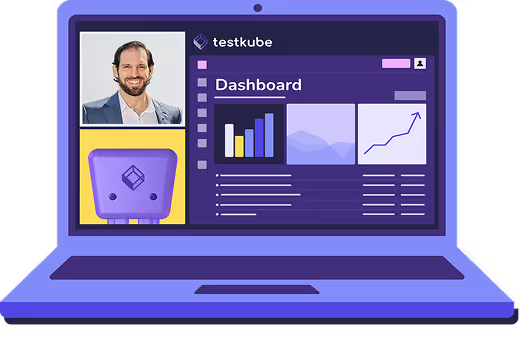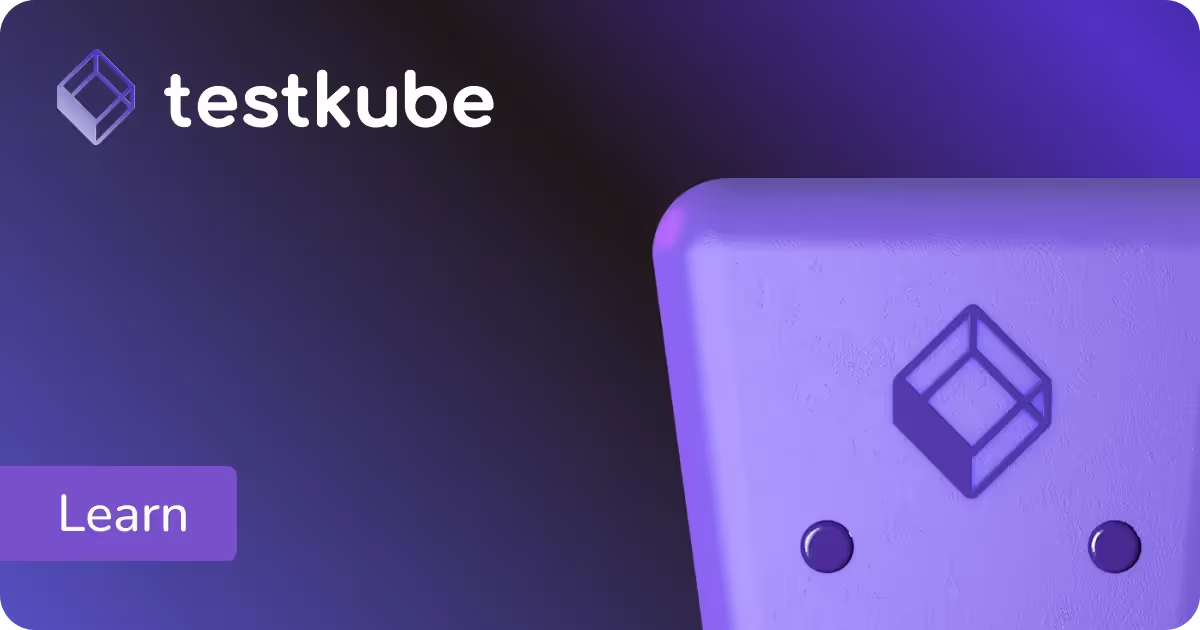

Table of Contents
Try Testkube instantly in our sandbox. No setup needed.
Try Testkube instantly in our sandbox. No setup needed.




Table of Contents
Executive Summary
With the adoption of Kubernetes for container orchestration continuing to grow, developers, DevOps, and testers alike are faced with new challenges when setting up a system for testing their applications. This is no different for front-end applications—especially with most conventional tools for front-end testing not always aligning perfectly with the intricacies of Kubernetes environments.
This prompts our need for innovative solutions that match the level of an advanced architecture overall. In this article, we'll take a look at the difficulties and challenges associated with testing front-end applications in Kubernetes, explore popular tools, and discuss the evolution towards cloud-based testing.
Why should you test your front-end applications?
User experience is critical. As the first point of contact with your users, testing your front-end applications helps improve overall user satisfaction.
Modern applications have many elements and complex architectures, which consist of microservices, several UI components, etc. By systematically identifying and rectifying issues related to user interface interactions, responsiveness across devices, and potential bugs in the codebase, front-end testing not only enhances the quality and reliability of the software but also contributes to maintain code stability, supports collaboration among development teams, and ultimately reduces the risk of encountering costly and disruptive problems post-deployment.
Challenges in Testing Front-End Applications in Kubernetes:
- Dynamic Environment:
Kubernetes clusters are dynamic, with containers being scaled up or down based on demand. This dynamic nature poses a challenge for traditional testing tools, as the testing environment needs to adapt to these changes seamlessly.
- Network Complexity:
Front-end applications in Kubernetes often rely on microservices that communicate over a complex network. Testing such distributed systems requires tools that can effectively simulate and monitor the network behavior.
- Stateless vs. Stateful Applications:
Kubernetes supports both stateless and stateful applications. Testing front-end applications in this diverse environment demands tools that can handle the unique challenges presented by stateful components.
Popular Tools for Testing Front-End Applications in Kubernetes:
Selenium, Cypress, SoapUI, Playwright - these testing tools are revered in the development community. Yet, integrating them smoothly with Kubernetes may require nuanced configurations, since most of them are not necessarily built with Kuberntes in mind.
- Playwright:
Playwright is a modern and versatile testing framework that excels in end-to-end testing of web applications. Its seamless integration with various browsers, including Chrome, Firefox, and Safari, makes it a valuable tool for ensuring cross-browser compatibility.
Check out our Playwright tutorial here.
- Cypress:
Cypress has gained popularity for its fast and reliable testing capabilities. However, it may require additional configuration to seamlessly fit into Kubernetes workflows.
Check out our Cypress tutorial here.
- SoapUI:
SoapUI is a comprehensive tool specifically designed for testing web services and APIs. While it may not directly address front-end testing, its importance lies in verifying the functionality and performance of the backend services that often interact with front-end components.
Check out our SoapUI tutorial here.
- Selenium:
Selenium is a widely-used tool for testing web applications. However, its integration with Kubernetes can be complex, especially when dealing with containerized environments.
Check out our Selenium tutorial here.
Building a Cloud-Based Testing System:
To address these challenges, a cloud-based testing system can provide the necessary flexibility and scalability. Employing Kubernetes itself for orchestrating testing environments, coupled with streamlined Continuous Integration and Continuous Deployment (CI/CD) pipelines, ensures a robust testing framework.
Some key components of such a system could include:
- Container Orchestration:
Leverage Kubernetes itself to orchestrate testing environments, mirroring the production environment closely.
- Continuous Integration/Continuous Deployment (CI/CD) Pipelines:
Integrate testing seamlessly into CI/CD pipelines, ensuring that each code change undergoes thorough testing in a Kubernetes environment before deployment.
- Distributed Test Execution:
Implement tools that support distributed test execution, enabling parallel testing of front-end applications across multiple instances within the Kubernetes cluster.
Introducing Testkube for Kubernetes Front-End Testing
Testkube is a specialized testing tool designed specifically for Kubernetes environments. It addresses the challenges of testing front-end applications by providing:
- Kubernetes-Native Integration:
Testkube is built with Kubernetes in mind, ensuring seamless integration with the cluster's dynamic and distributed nature.
- Scalability and Flexibility:
Testkube scales effortlessly to accommodate the dynamic nature of Kubernetes, providing flexibility in testing various scenarios.
- Network Simulation:
With built-in capabilities for simulating complex network scenarios, Testkube aids in testing the resiliency of front-end applications in a Kubernetes environment.
Conclusion
Testing front-end applications in Kubernetes clusters presents unique challenges, but with the right approach and tools, developers can overcome these hurdles. Cloud-based testing, coupled with Kubernetes-native tools like Testkube, offers a comprehensive solution to ensure the reliability and performance of front-end applications in the ever-evolving world of container orchestration.
Get started with Testkube and experience all the features that it brings to the table. You can also join our Slack community for guidance and support.


About Testkube
Testkube is a cloud-native continuous testing platform for Kubernetes. It runs tests directly in your clusters, works with any CI/CD system, and supports every testing tool your team uses. By removing CI/CD bottlenecks, Testkube helps teams ship faster with confidence.
Explore the sandbox to see Testkube in action.






